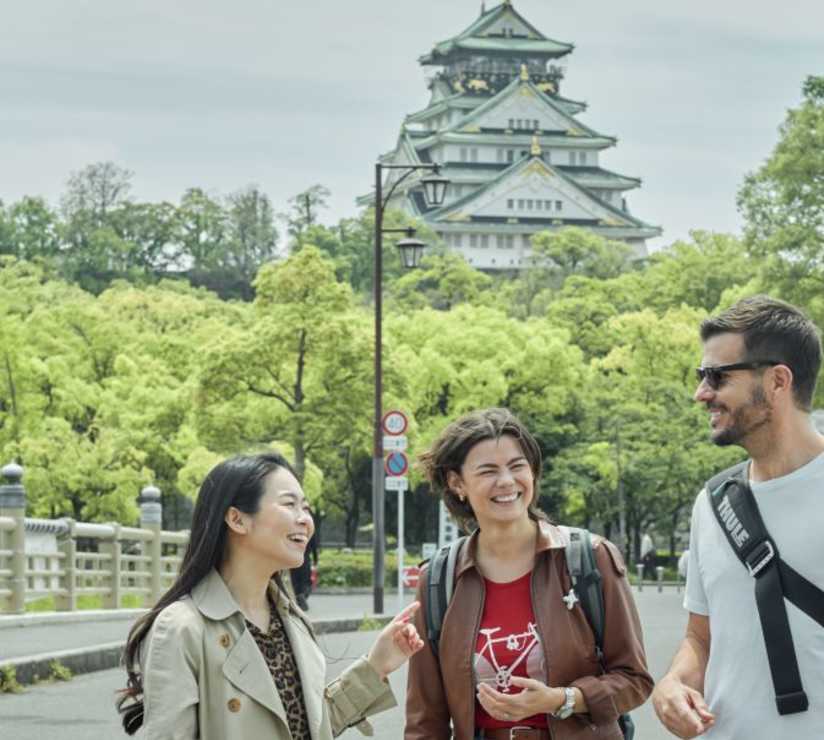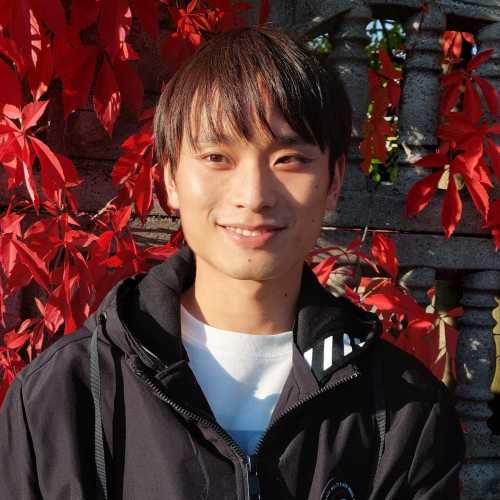Table Of Contents
- Why I Never Get Lost in Osaka
- First Steps: Arriving Smart at Kansai or Itami
- The Three Stations You Need to Understand
- Staying Central: My Thoughts on Hotel Royal Classic Osaka
- Local Eats You Can Reach on Foot
- Understanding Osaka's Food Scene
- Built Around the Stations
- Transportation Logic and Practical Tips
- Accommodation Strategies
- Shopping and Markets
- Day Trip Options from Osaka
- Seasonal Considerations
- Cultural Insights and Local Customs
- Practical Information and Resources
- Avoiding Crowds Without Losing the Vibe
- Final Thoughts: What I'd Tell You Before Your First Trip
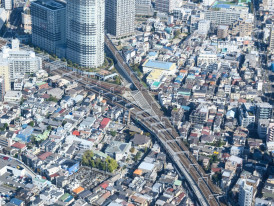
Comparison diagram showing Tokyo's sprawling layout versus Osaka's compact grid. Photo by Manish Tulaskar on Unsplash
I've lived here for twelve years, and I've watched countless visitors struggle with the same navigation issues. They arrive at Kansai Airport or Itami Airport with grand plans, then spend half their trip figuring out where everything actually is. The solution isn't more apps or better maps – it's understanding how this city works.
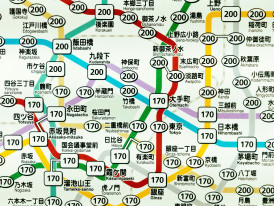
Detailed rail map highlighting key connections between major stations. Photo by Jackie Alexander on Unsplash
Why I Never Get Lost in Osaka
The secret to navigating Osaka lies in its central hub system. Unlike other cities in Japan where attractions scatter randomly, Osaka organizes itself around three main stations: Osaka Station, Namba Station, and Tennoji. Everything worth seeing sits within walking distance of these transport nodes.
I learned this the hard way during my first trip here as a university student. I had a list of places to visit Osaka, but no understanding of geography. I spent entire days riding trains back and forth, missing obvious connections. Now I see the city as a series of interconnected neighborhoods, each with its own character but all linked by efficient rail lines.
The Kansai region's rail system makes perfect sense once you grasp the basics. Osaka Station connects you north to Kyoto and south to Nara. Namba Station puts you in the heart of the entertainment district. Tennoji serves as your gateway to Osaka Castle and the southern neighborhoods.
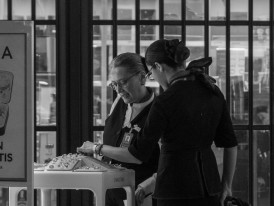
Airport rail pass counter with English-speaking staff assisting travelers Photo by Abdiel Hernandez Villegas Pexels
First Steps: Arriving Smart at Kansai or Itami
Most international travelers land at Kansai Airport, about 45 minutes south of central Osaka. The airport express trains run every 15 minutes, and you have two main options: the Kansai Express to Osaka Station or the Nankai Main Line to Namba Station.
I recommend the Kansai Express if you're staying near the Station or planning to explore northern areas. Choose Nankai if your hotel sits closer to Namba or you want immediate access to street food and shopping streets. Both routes cost roughly the same and take similar time.
For domestic flights, Itami Airport sits much closer to the city center. The airport bus takes 30 minutes to reach Osaka Station, running every 20 minutes throughout the day. Itami Airport also connects directly to several hotels, including stops near Hotel Royal Classic Osaka in the Namba area.
The key insight most guides miss: buy your rail pass at the airport before leaving. The city center locations get crowded, and you'll waste time standing in lines. Airport staff speak English and can explain the different pass options clearly.
Looking for a private city experience in Osaka?
Explore the city with a local who plans a private day just for you; no groups, no scripts.
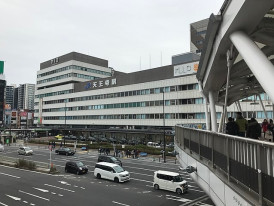
Tennoji exterior with traditional Japanese architectural elements Photo by そらみみ Creative Commons Attribution-Share Alike 4.0
The Three Stations You Need to Understand
Osaka Station: The Northern Hub
Osaka Station serves as the city's main transport interchange, connecting regional trains, subways, and local lines. The station complex includes shopping centers, restaurants, and direct connections to major hotels. Most first-time visitors find this area overwhelming, but the layout follows simple logic.
The area around Osaka Station contains Grand Front Osaka, a massive shopping and dining complex built directly above the rail platforms. You can access most of the building's restaurants and shops without leaving the station. This makes it perfect for meal breaks between sightseeing.
North of the station, you'll find the Umeda Sky Building with its famous observation deck. The walk takes about 10 minutes through covered walkways, so weather doesn't matter. The observation deck offers some of the best views in the city, especially during sunset.
View from Umeda Sky Building observation deck showing Osaka's
Namba Station: Entertainment Central
Namba Station puts you in the middle of Osaka's entertainment district. The area around the station buzzes with neon lights, street food vendors, and shopping streets that stay open late. This is where you'll find the famous Dotonbori river and most of the city's nightlife.
The station connects to multiple subway lines, making it easy to reach other parts of the city. More importantly, you can walk to most of Namba's attractions in under 10 minutes. The covered shopping arcades protect you from rain and provide shortcuts between different areas.
Street food in this area represents some of the best in Japan. The nation's kitchen reputation comes largely from vendors operating within walking distance of Namba Station. You'll find takoyaki, okonomiyaki, and other local specialties prepared by third-generation shop owners.
Tennoji: The Historical Gateway
Tennoji Station provides access to Osaka Castle and several of the city's oldest temples. The area feels less touristy than Namba but offers more authentic cultural experiences. Many day trip itineraries to Nara and southern Kansai region destinations start from here.
The walk from Tennoji to the Castle takes about 15 minutes through Osaka-jo Park. When the Cherry blossom's bloom it transforms this route into something spectacular, but the castle itself impresses year-round. The current structure combines historical accuracy with modern museum facilities.

Quiet street behind Hotel Royal Classic with traditional restaurants Image by Hong daewoong from Pixabay
Staying Central: My Thoughts on Hotel Royal Classic Osaka
Hotel Royal Classic Osaka sits in an ideal location for first-time visitors. The property occupies a quiet street in the Namba area, providing easy access to major attractions while avoiding the constant noise of the main entertainment strips.
I've recommended this hotel to friends visiting from Tokyo and other parts of Japan. The rooms blend Western comfort with Japanese attention to detail. More importantly, you can walk to Namba Station in five minutes and reach Osaka Station in 20 minutes by train.
The hotel's location puts you within walking distance of several hidden gems that most tourists miss. Behind the building, narrow streets contain family-run restaurants that have operated for decades. These places don't appear in guidebooks but serve some of the city's best local food.
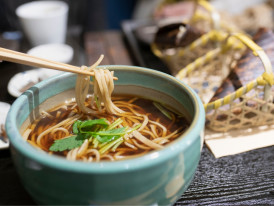
Udon noodle specialist preparing fresh noodles.
Local Eats You Can Reach on Foot
Traditional Markets and Fresh Ingredients
Kuromon Ichiba Market operates about 10 minutes from central Osaka and has provided fresh seafood to local restaurants for over 190 years. The market opens early, around 6 AM, when professional chefs select ingredients for their daily menus.
Most tourists visit Osaka for the market for prepared street food, but the real experience comes from watching the morning trade. Vendors display tuna sections, seasonal vegetables, and specialty items like pressed sushi rice. The quality exceeds what you'll find in most Tokyo markets.
The market's narrow aisles create an intimate atmosphere where you can observe traditional food preparation techniques. Several stalls offer samples, and vendors often explain their products in basic English. This provides insights into local food culture that restaurants can't match.
Neighborhood Food Culture
The areas around main stations contain dozens of small restaurants specializing in single dishes. These places focus on perfecting one type of food rather than offering extensive menus. The approach creates consistently high quality but requires knowing where to look.
Near Osaka Station, I frequent a place that serves only udon noodles. The owner has spent 30 years developing his broth recipe, and the results justify the limited menu. Similar specialists operate throughout the city, often in locations that maps don't highlight.
Food tour groups occasionally visit these restaurants, but independent exploration rewards you with more authentic experiences. The staff at small establishments often share stories about their ingredients and cooking methods, providing cultural context that organized tours skip.
What if your day in Osaka was planned by someone who knows it — and you?
City Unscripted matches you with a local host who creates a private experience based on your interests, not a set route.
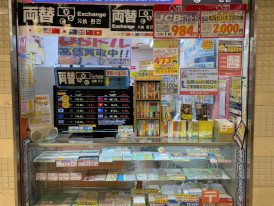
Convenience store display of local Osaka specialties Photo by Kelvin Zyteng on Unsplash
Understanding Osaka's Food Scene
Beyond the Tourist Spots
Osaka's reputation as the nation's kitchen comes from its merchant culture and access to fresh ingredients from both land and sea. The city sits at the confluence of several rivers, with Osaka Bay providing seafood while surrounding farmland supplies vegetables and grains.
The Seto Inland Sea influences local cuisine significantly. Fish caught in these waters appear on menus throughout the city, often prepared using techniques passed down through generations. This connection between geography and food culture gives Osaka's restaurants their distinctive character.
Traditional cooking methods persist in modern kitchens. Many chefs still prepare their own dashi (soup stock) daily, using techniques their grandparents taught them. This attention to fundamentals creates the foundation for Osaka's exceptional food quality.
Street Food Networks
The street food scene operates through informal networks of vendors who often know each other personally. Many learned their trades from family members or apprenticed under established operators. This creates consistency in quality and helps maintain traditional recipes.
Green onions appear in many local dishes, grown in nearby Osaka Prefecture farmland. The proximity to ingredient sources allows street food vendors to use exceptionally fresh components. You'll taste the difference compared to similar dishes in cities farther from agricultural areas.
Convenience stores stock local specialties alongside national brands. These stores provide an easy way to sample regional foods without committing to restaurant meals. The quality often exceeds what tourists expect from convenience store food.
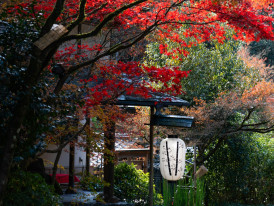
Traditional Japanese architecture with autumn foliage. Photo by Weichao Deng on Unsplash
Built Around the Stations
Morning: Starting from Osaka Station
Begin early morning at Osaka Station to avoid crowds at major attractions. The first trains start running around 5 AM, and you can reach most destinations before tourist groups arrive. This timing works especially well for photography and peaceful temple visits.
Walk north to the Umeda Sky Building observation deck, which opens at 10 AM. The morning light provides clear views across the city, and you can identify landmarks for later visits. The admission entrance fee includes access to the floating garden and underground market.
From the observation deck, you can see the layout of Osaka clearly. The view helps you understand how the city's neighborhoods connect and plan efficient routes for the rest of your day. The staff provides maps and can suggest walking routes based on your interests.
Afternoon: Exploring Namba and Surroundings
Spend afternoon hours in the Namba area, where covered shopping streets provide comfort regardless of weather. The Dotonbori canal area becomes very crowded after 3 PM, so plan major sightseeing before then.
The shopping streets around Namba Station extend for several blocks in each direction. These covered arcades contain everything from traditional crafts to modern electronics. The mix creates an interesting contrast between old and new culture.
Hidden gems exist throughout this area if you explore beyond the main streets. Namba Yasaka Shrine sits just 10 minutes from the station but receives few visitors. The shrine's architecture provides a peaceful contrast to the surrounding urban energy.
Evening: Cultural Experiences
Evening hours work well for cultural activities like tea ceremony experiences or visiting traditional restaurants. Many cultural centers offer programs designed for visitors, usually starting around 6 PM when work day crowds disperse.
The beating heart of Osaka's evening culture happens in small restaurants and bars scattered throughout residential neighborhoods. These places provide authentic interaction with local people and showcase local culture in everyday settings.
Walking tour companies offer evening programs that focus on food and local neighborhoods. However, independent exploration often yields more rewarding experiences, especially if you're comfortable with basic Japanese phrases.
Alternative Observation Points
While Umeda Sky Building gets most attention, several other locations offer exceptional views of Osaka. The observation deck at Osaka Castle provides historical context along with city views, showing how the urban landscape developed around the original fortification.
View of modern Osaka from Osaka Castle observation area photo by
Many hotels in the Osaka Station area have rooftop restaurants or bars with impressive views. These locations cost more than public observation decks but provide more comfortable settings and often better photography opportunities.
The Tempozan Harbor Village area near Osaka Bay contains a large Ferris wheel that operates until late evening. The ride provides 360-degree views of the city, bay, and surrounding mountains. This location sees fewer crowds than central observation points.
Seasonal Viewing Opportunities
Cherry blossom season transforms many standard viewing locations into spectacular experiences. Osaka Castle Park becomes particularly beautiful during this period, with thousands of cherry trees creating a pink canopy over the historical grounds.
The banks of local rivers provide excellent cherry blossom viewing opportunities away from major tourist crowds. These locations offer more peaceful experiences and better opportunities for photography without large groups of people.
Autumn colors create different but equally impressive viewing opportunities. The contrast between traditional architecture and seasonal foliage provides distinctly Japanese scenic experiences.

Covered shopping street during rainy weather with normal crowd levels Photo by Peter Conrad on Unsplash
Transportation Logic and Practical Tips
Understanding the Rail Network
Osaka's rail system includes JR lines, private railways, and subway systems. Each operates independently but connects at major stations. Understanding these connections saves significant time and reduces confusion during travel.
Rail network map showing different line types and connections
JR lines connect Osaka to other cities in the Kansai region, including Kyoto, Nara, and Kobe. These trains use different platforms and ticketing systems than subway lines, but most stations provide clear English signage for transfers.
Private railways often provide faster routes to specific destinations than JR alternatives. The Hanshin line to Kobe and Keihan line to Kyoto sometimes offer more comfortable rides than JR trains, especially during rush hours.
Subway lines cover the city center efficiently but don't extend to outlying attractions. Plan your routes to minimize transfers between different rail systems, and consider day passes if you'll make multiple trips.
Timing and Crowd Management
Rush hours in Osaka occur from 7-9 AM and 5-7 PM on weekdays. Avoiding these periods makes travel more comfortable and reduces waiting times at popular attractions. Weekend crowds at tourist sites peak between 11 AM and 3 PM.
Many attractions open early, around 8 or 9 AM, providing opportunities to visit before crowds arrive. This timing works especially well for temple visits and outdoor attractions like Osaka Castle.
Rain affects crowd patterns significantly. Indoor attractions become more crowded during bad weather, while outdoor sites may be nearly empty. Covered shopping streets provide excellent alternatives during rainy periods.
Tip
We match you with the right host, not just any guide.Want to experience the real Osaka with someone who lives there?
A fully private experience, planned and led by a local host who tailors the day to you

Residential neighborhood between major stations showing daily life Photo by Hiroyoshi Urushima on Unsplash
Accommodation Strategies
Location Considerations
Staying near main stations provides maximum flexibility for daily activities. Hotels within walking distance of Osaka Station, Namba Station, or Tennoji offer easy access to most attractions and restaurant areas.
The areas between major stations often provide better value accommodation with less noise than hotels directly adjacent to busy rail terminals. These locations still offer convenient access while providing more peaceful evening environments.
Capsule hotels throughout the city provide budget-friendly accommodation with unexpectedly high service levels. Many offer excellent breakfast options and comfortable common areas, making them suitable for travelers seeking authentic Japanese experiences.
Neighborhood Character
Different areas around main stations have distinct personalities. The Osaka Station area feels more business-oriented with modern shopping centers and office buildings. Namba provides more entertainment and nightlife options.
Areas near Tennoji Station maintain more traditional atmosphere with smaller shops and family-run restaurants. This area provides easier access to historical attractions while maintaining convenient transportation connections.
Local neighborhoods between main stations contain residential areas with authentic everyday life experiences. Staying in these areas provides insights into contemporary local culture beyond tourist attractions.
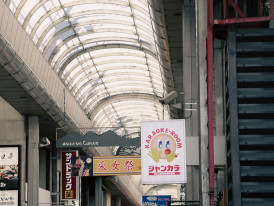
Underground shopping area connected to train station Photo by XS Xue on Unsplash
Shopping and Markets
Traditional Market Experiences
Osaka's markets provide authentic cultural experiences along with opportunities to purchase local products. These markets operate early in the morning when professional chefs and local residents shop for daily ingredients.
Vintage stores throughout the city contain interesting items from Japan's recent history. These shops often carry clothing, electronics, and household items that reflect different periods of Japanese culture.
The variety in traditional markets exceeds what most tourists expect. Beyond fresh food, these markets sell kitchen equipment, traditional crafts, and specialty items used in local cooking.
Modern Shopping Districts
Shopping streets around major stations combine traditional small shops with modern retail chains. This mixture creates interesting contrasts and provides opportunities to find both local specialties and familiar international brands.
Many shopping areas extend underground, connecting directly to train stations. These underground networks allow comfortable shopping regardless of weather conditions and provide shortcuts between different areas.
Department stores in major shopping districts often include impressive food courts featuring local specialties. These food courts provide opportunities to sample various regional dishes in comfortable settings.
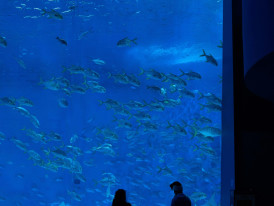
Large aquarium tank with diverse marine life Photo by Shay Chen on Unsplash
Day Trip Options from Osaka
Kansai Region Destinations
Osaka's central location makes it an excellent base for exploring the broader Kansai region. Day trip destinations include Kyoto, Nara, Kobe, and several smaller cities, all accessible within 1-2 hours by train.
Nara makes an excellent day trip destination, famous for its free-roaming deer and ancient temples. The journey takes about 45 minutes from Osaka, and the city provides a completely different experience from urban Osaka.
Himeji Castle, about 1 hour from Osaka, represents one of Japan's finest original castles. The structure survived World War II bombing and provides authentic historical experiences. The surrounding city offers traditional architecture and cultural sites.
Theme Park and Modern Attractions
Universal Studios Japan in Osaka Bay provides modern entertainment with Japanese twists on familiar themes. The Wizarding World of Harry Potter section includes unique elements designed specifically for the Japanese market.
The theme park requires full-day visits to experience major attractions. Express passes reduce waiting times but cost significantly more than basic admission. Plan visits for weekdays when possible to avoid extreme crowds.
Impressive aquariums near Osaka Bay showcase marine life from local waters and international locations. These facilities provide educational experiences about marine ecosystems and conservation efforts.
Ready to plan your perfect day in Osaka?
Start your experience
Winter scene in Osaka with people enjoying hot street food Photo by ayumi kubo on Unsplash
Seasonal Considerations
Cherry Blossom Season Planning
The Cherry Blossoms in Osaka typically bloom in early April, but timing varies by weather conditions. The brief blooming period creates intense demand for accommodation and major attractions become extremely crowded.
Alternative viewing locations provide equally beautiful experiences with fewer crowds. River banks, smaller parks, and residential areas often contain impressive cherry blossom displays without tourist bus traffic.
The tradition of hanami (cherry blossom viewing) involves picnicking under blooming trees. Local convenience stores sell special seasonal foods designed for outdoor eating during this period.
Summer and Winter Experiences
Summer in Osaka can be extremely hot and humid, with temperatures often exceeding 35°C (95°F). Air-conditioned shopping centers, museums, and indoor attractions provide necessary relief during peak heat periods.
Festival seasons during summer create special atmosphere throughout the city. Many neighborhoods organize local festivals with food stalls, traditional performances, and community celebrations.
Winter temperatures remain moderate compared to northern Japanese cities, but the season creates different opportunities for sightseeing and cultural activities. Indoor attractions become more appealing, and hot food gains special significance.
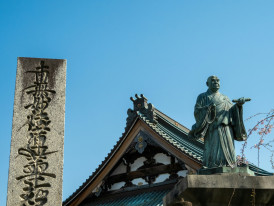
Historical marker explaining Osaka's merchant culture heritage Photo by YANGHONG YU on Unsplash
Cultural Insights and Local Customs
Understanding Japanese Culture in Osaka
Osaka people are known throughout Japan for their directness and humor, contrasting with the more reserved nature of people in other major cities. This cultural difference creates a more relaxed atmosphere for those who visit Osaka.
The city's merchant culture influences daily interactions. Business relationships and customer service reflect centuries of trading traditions, creating efficient but friendly commercial experiences.
Local dialects in Osaka differ noticeably from standard Japanese, but most residents speak standard Japanese when interacting with visitors. The dialect adds character to local culture without creating communication barriers.
Understanding basic etiquette enhances cultural experiences significantly. Simple gestures like bowing slightly when greeting people or removing shoes when entering certain buildings show respect for local customs.
Religious and Historical Context
Buddhism and Shintoism coexist throughout Osaka, with many neighborhoods containing both Buddhist temples and Shinto shrines. These religious sites provide insights into Japanese spiritual traditions and architectural styles.
Many temples and shrines have long history stretching back centuries. The current buildings often represent reconstructions of original structures, but they maintain traditional construction techniques and materials.
Religious sites serve community functions beyond worship. Many host festivals, provide meeting spaces, and maintain historical records for their neighborhoods. Understanding these roles helps visitors appreciate their cultural significance.
Evil spirits and protective deities feature prominently in local religious traditions. Many buildings display symbolic elements designed to ward off negative influences or invite positive energy.
The rich history of Osaka includes periods as a major commercial center, political capital, and cultural hub. This diverse background created the complex urban environment that exists today.
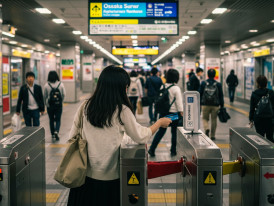
IC card being used at Osaka train station gate
Practical Information and Resources
Communication and Language
Most signs in Osaka include English translations, and many restaurants provide English menus. However, learning basic Japanese phrases enhances cultural experiences and shows respect for local customs.
Translation apps work well for basic communication, but don't rely on them completely. Many older Japanese people prefer traditional communication methods and may not be comfortable with phone-based translation.
Tourist information centers at major stations provide English-language materials and staff who can answer questions about attractions, transportation, and local events. These centers often have maps and brochures not available elsewhere.
Safety and Emergency Information
Osaka maintains very low crime rates compared to other major international cities. Petty theft and violent crime are rare, but basic precautions still apply, especially in crowded areas and late at night.
Emergency services in Japan use different phone numbers than other countries. Police: 110, Fire/Ambulance: 119. Tourist hotlines provide English-language assistance for non-emergency situations.
Natural disasters, particularly earthquakes, can occur in the Kansai region. Hotels and public buildings display emergency procedures, and smartphone apps provide earthquake early warning systems.
Money and Payment Systems
Many businesses in Osaka still operate primarily with cash, although credit card acceptance has increased significantly in recent years. ATMs at convenience stores accept international cards and provide English-language interfaces.
IC cards for public transportation work throughout the Kansai region and can be used for small purchases at many shops and restaurants. These cards provide convenient alternatives to carrying cash for daily expenses.
Tipping is not customary in Japan and can sometimes cause confusion or embarrassment. Service charges are included in prices at restaurants and hotels.
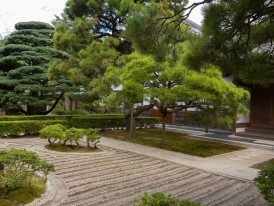
Quiet neighborhood park with traditional garden elements. Photo by Transly Translation Agency on Unsplash
Avoiding Crowds Without Losing the Vibe
Alternative Timing Strategies
Most tourists visit major attractions during peak hours, creating opportunities for alternative scheduling. Early morning and late afternoon visits often provide better experiences with fewer crowds.
Weekday visits to popular attractions typically involve smaller crowds than weekend visits. This timing works especially well for photography and detailed exploration of historical sites.
Many attractions offer special early-opening or late-closing programs for smaller groups. These programs cost more than standard admission but provide more intimate experiences.
Seasonal variations in crowd patterns create opportunities for strategic timing. International tourist seasons don't always align with local holiday periods, creating windows of reduced crowding.
Hidden Gems and Local Favorites
Local residents often prefer attractions and restaurants that don't appear in major guidebooks. These places provide authentic experiences while avoiding tourist crowds.
Neighborhood shrines and temples offer spiritual experiences without the commercialization of major tourist sites. These locations maintain traditional functions within local communities.
Parks and green spaces throughout Osaka provide peaceful environments for rest and reflection. Many contain traditional gardens, walking paths, and seasonal flower displays.
Local neighborhoods contain interesting architecture, small museums, and cultural sites that receive little international attention but showcase authentic Osaka culture.
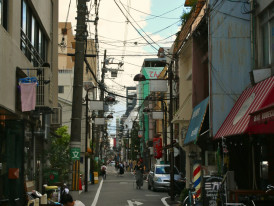
Peaceful residential street in Osaka showing everyday life Photo by Bruna Santos on Unsplash
Final Thoughts: What I'd Tell You Before Your First Trip
Understanding Osaka's logic makes all the difference between a frustrating visit and an enlightening experience. The city rewards travelers who take time to understand its structure rather than rushing between disconnected attractions.
The best osaka travel tips focus on working with the city's natural flow rather than fighting against it. Plan your days around transportation hubs, eat at places local people frequent, and allow time for unexpected discoveries.
Your first trip to Osaka should establish foundations for understanding local culture and urban organization. The city provides an excellent introduction to Japan that balances traditional elements with modern conveniences.
Most importantly, remember that Osaka is a living city where people work, live, and pursue daily activities. Respecting local customs and showing genuine interest in local culture enhances experiences for everyone involved.
The city center offers everything most visitors need within convenient walking distances. However, don't hesitate to explore beyond central areas when time permits. Some of the most memorable experiences happen in quiet neighborhoods where tourists rarely venture.
Transportation systems connect virtually every interesting destination efficiently. Master the basic station connections early in your visit, and you'll spend more time experiencing culture and less time trying to figure out where you're going.
Local food represents a huge part of Osaka's cultural identity. Don't limit yourself to restaurant recommendations from international sources. Ask local people for their favorite treats and be willing to try unfamiliar foods.
The special atmosphere of Osaka comes from its combination of historical significance, cultural traditions, and modern urban energy. Each neighborhood contributes different elements to this mixture, creating a complex but coherent urban experience.
Whether you spend time exploring major attractions or discovering hidden corners, consider joining one of the many Osaka-walking-tours that offer curated routes through diverse neighborhoods. Approach Osaka with curiosity and respect for local culture. The city responds positively to visitors who show genuine interest in understanding its character.
Remember that maps and guidebooks provide starting points, but the most rewarding experiences often come from spontaneous exploration and interactions with local people. Stay flexible with your plans and remain open to unexpected opportunities.
Fun facts about Osaka: The city invented instant ramen, hosts one of the world's largest fish markets, and contains more bridges than Venice. These details reflect the innovative spirit and practical approach that characterize local culture.
Your guide to Osaka should help you understand the city's personality rather than just listing attractions. Once you grasp how Osaka works, you can create your own experiences and discover aspects of the city that match your particular interests and travel style.
Satoshi Endo lives in Osaka and has been helping visitors navigate the city since 2012. His analytical approach to urban exploration has helped hundreds of travelers discover the logic behind Osaka's apparent complexity.
What if your day in Osaka was planned by someone who knows it — and you?
City Unscripted matches you with a local host who creates a private experience based on your interests, not a set route.
Want to experience the real Osaka with someone who lives there?
A fully private experience, planned and led by a local host who tailors the day to you
